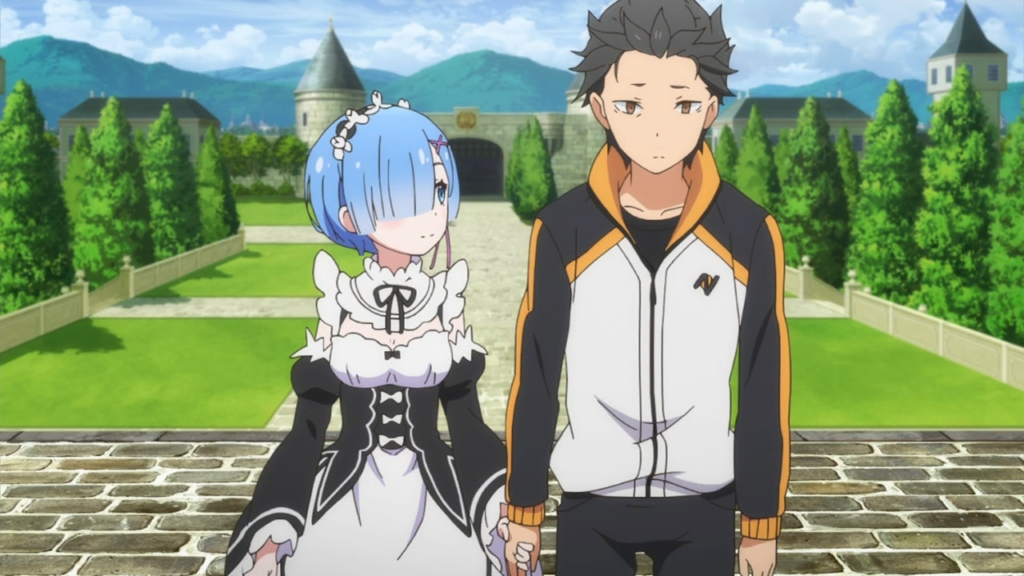At the tail end of the 2010s, we’ve come into a mindset as a fandom where we analyze everything we watch extremely carefully — sometimes for the better, sometimes to a fault. One thing I’ve seen a lot of hangups on in the last handful of years is what the presence of a character type is assumed to mean about a creator. That is, if a character is present in a series as anything but an outright villain, the writer approves of anything they say or do. I could absolutely speak to some shows where this is the case, but more often than not . . . it just isn’t. And so much is being missed by making this assumption.
As a writer myself, I have created major characters who have had some very skewed moral compasses: believing that survival was more important than free will, or that all crimes were forgivable provided they were committed in the pursuit of knowledge. I do not believe these things at all, and in fact created these characters to show how flawed that thinking was and what a life lived that way will do to a person. Denying myself the ability to write those characters would have necessitated a much more on-the-nose presentation: one that didn’t allow for character growth, or for a deeper investigation of the lies people tell themselves (and others) to excuse their actions.

When it comes to anime, it’s a lot harder to make my case. So many modern shows champion the idea that a protagonist deserves forgiveness no matter what (especially from their Best Girl), and that large-scale flaws are endearing. We’re not talking occasional forgetfulness or having a humorously short fuse; we’re talking betraying trust, assuming superiority over loved ones, engaging in human rights violations . . . you know, big stuff. But recently, I marathoned a show that was pretty much a master class in how to depict a flawed protagonist and make your audience aware we are not meant to be on their side.
Re:ZERO -Starting Life in Another World is one of many isekai series currently in the wider anime library. Isekai (literally “different world”) anime generally follows a here-and-now protagonist who’s transported to a fantasy world by some means, be it reincarnation, video games, or dumb luck. The hero generally has some sort of unexpected magic, or can use their memories of our world to advance the fantasy world. There are lots of variants from there, but the hero also tends to be a twenty-something Japanese guy with not a lot waiting for him back home.
The case of Re:ZERO is no different. Subaru is just a dude who phases into a D&D-esque fantasyland without warning. He hits it off right away with a half-elf girl, then that night they’re both brutally killed when trying to recover a stolen artifact. And then . . . it all resets. That’s the magic bit: whenever he dies, he resets to a previous “save point,” retaining all his memories while the rest of the world loses theirs. The girl, Emilia, doesn’t remember him. And he has to start all over. Constantly.
Subaru is our hero. He’s having a hard time. And he gets it really, really wrong, over and over again. He breaks promises, distrusting the woman he loves because having experienced the same situation over and over means he “knows better.” He belittles others, masks feelings of inferiority with acts of superiority, and attempts to use his bizarre gift to stay close to Emilia rather than improve himself. Despite his frankly horrible behavior at times, series writer Tappei Nagatsuki has left tells throughout the story to let us know that he’s not on Subaru’s side when he’s at his worst, nor should we be. They also happen to be three extremely useful tells we can lay against anything we watch, where we’re not sure what we’re meant to make of our flawed hero.

Point of View
Point of view is a major one. It’s easy to know what to think of someone in third person. Think of The Twilight Zone, where Rod Serling treated his protagonists as case studies. Even if we were at the character’s side the whole time, a narrator kept us grounded. But a third-person setup isn’t necessary for an accurate assessment of a character.
We travel through Re:ZERO with Subaru. We see every iteration of reality he sees. We see Emilia and the others in his life die repeatedly. We have all the same information he has upon which he bases his decisions, good or bad. At the same time, we don’t always look through Subaru’s eyes. At his worst times, we see him how his friends see him: frantic, angry, and occasionally seeming genuinely insane. That’s never shied away from.
Who we’re “with” isn’t our only standard for point of view. Camera angles (in TV shows and films) and other descriptors let us see the scenes as a whole. Where is the camera pointed when our protagonist is at their worst? Do we follow their eyes? Are we invited — or even forced — to romanticize what they romanticize, or hate what they hate? In those cases, yes, the writer may well be completely okay with what’s going on. Watch carefully next time you encounter a character like this: are you forced to agree, or given wiggle room to question?

Unreliable Narrator
Next up is an oldie but a goodie: the unreliable narrator. This is a standard tool in any writer’s toolkit. You place a character front and center and you either put them in charge of doling out information to the audience, or you let the audience believe they’re the ones in charge. Narrators can lie on purpose (Stephen Fry’s first novel, The Liar, is 177 pages of this), or not know they’re lying (Benedict Cumberbatch’s Sherlock claims to be a “high-functioning sociopath” — initially interpreted as writer oversight, it’s actually the character demonstrating how little he truly knows himself).
We align with Subaru because he is our tie to reality. The other characters are magicians, half-elves, demons, and spirits. He is most like us, so we trust his eyes and thoughts. But we forget that we know nothing about him. In fact, we meet him maybe five minutes before Emilia does, and all we’ve seen him do is go shopping. He doesn’t talk about himself until late in the series, and what little he presents seems to be mimicking a typical anime character in his position. It takes him getting to his lowest possible point to even crack the mystery that is Subaru prior to the series.
If a character isn’t to be trusted, the signs will be there — but they won’t always be silenced. Some of the most effective stories start out through deceptive filters.

Long Game
Finally, let’s talk about that lowest point… because your final tell is the long game. Not every hot mess character is going to suffer for their sins (see American Psycho for a story all about the exact opposite — and another good example of protagonists whose actions aren’t even remotely condoned). Sometimes they will. Sometimes they’ll be redeemed, or redeem themselves. Sometimes, as with Re:ZERO, you’re watching their transformative purgatory.
Episode 15 made it clear once and for all that Subaru’s increasingly off-the-wall behavior was not meant to be waved off. The harder he went believing himself to be flawless at the expense of others, the more horrible things became. The series, animation and all, descended into some of the darkest psychological horror I’ve ever seen — and that’s saying something. He was being punished right in front of us, and the punishment did not stop until he got out of his feelings and made a change.
Subaru’s story isn’t remotely over. The light novels are still running and a new season of the anime is still in the works. He’s not a completely horrible person, as we see when he begins to use his Return by Death power to avert crises for others. His story is one of redemption and learning: a story you can’t tell when you force deeply flawed characters to be villains above all else.
In the end, it’s important to remember: a good writer will make their story clear, but that doesn’t always mean it will come to us on a silver platter. Meeting these dubious characters in fiction teaches us to identify them in the real world. Watching their flaws either break them down or lead to their redemption gives us hope, or perspective, for when we’re feeling less than perfect. They’re stories worth telling and, while they can be hard to get right, they’re worth it when they do.


Comments are closed.